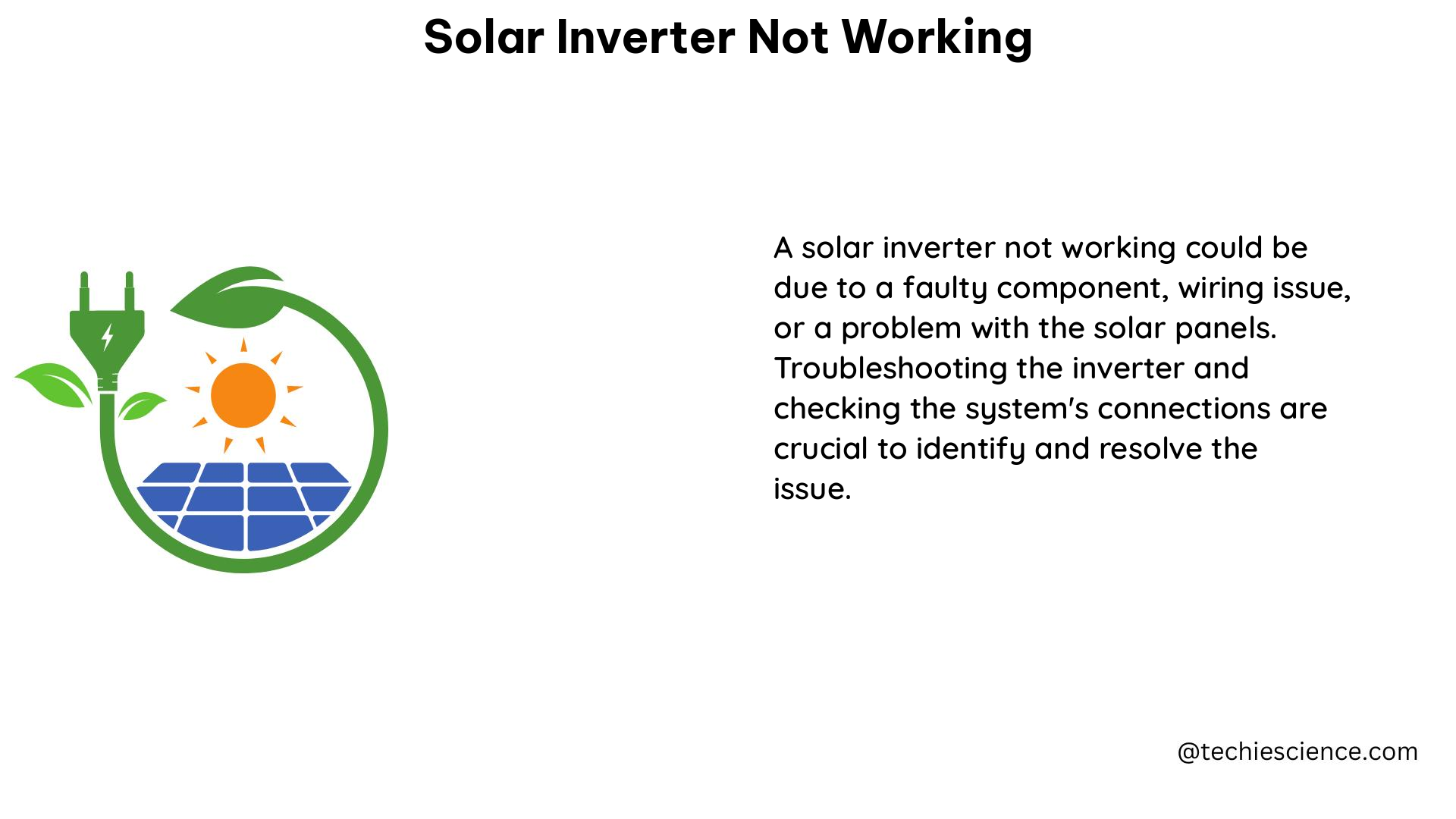A solar inverter is a critical component of a solar power system, responsible for converting the direct current (DC) generated by solar panels into alternating current (AC) that can be used to power homes and businesses. However, when a solar inverter stops working, it can lead to a disruption in the supply of solar power, leaving homeowners and businesses without a reliable source of renewable energy. In this comprehensive guide, we will delve into the technical specifications of solar inverters and provide a step-by-step DIY approach to troubleshooting and fixing common issues that may arise with a non-functioning solar inverter.
Technical Specifications of Solar Inverters
Solar inverters are designed to operate within specific technical parameters to ensure optimal performance and efficiency. Understanding these specifications is crucial for identifying and resolving any issues that may arise with your solar inverter.
Voltage and Current Ranges
Solar inverters are designed to operate within specific voltage and current ranges. A typical solar inverter may have a voltage range of 200-400V and a current range of 0-20A. Exceeding these ranges can lead to the inverter shutting down or even causing damage to the system.
Power Factor
The power factor of a solar inverter is a measure of how effectively it converts DC power to AC power. A power factor of 1.0 indicates perfect efficiency, while a power factor of less than 1.0 indicates a loss of power during the conversion process. Most solar inverters have a power factor of 0.95 or higher.
Efficiency
The efficiency of a solar inverter is a measure of how much of the DC power generated by solar panels is converted into AC power. A typical solar inverter has an efficiency of 95-98%, meaning that up to 98% of the DC power is converted into usable AC power.
Maximum Power Point Tracking (MPPT)
MPPT is a feature of solar inverters that allows them to maximize the power output of solar panels by tracking the maximum power point (MPP) of the panels. This ensures that the solar panels are operating at their most efficient point, even as environmental conditions change.
Grid Tie and Off-Grid Capability
Solar inverters can be classified as grid-tie or off-grid. Grid-tie inverters are designed to connect to the utility grid, while off-grid inverters are designed to operate independently of the grid. Ensuring that your solar inverter is compatible with your specific power system is crucial for proper operation.
DIY Troubleshooting and Fixing Common Issues

If your solar inverter is not working, there are several DIY troubleshooting and fixing steps you can take to identify and resolve the issue. Here are some common problems and their solutions:
1. Loose or Broken Connections
Check all connections between the solar panels, inverter, and battery bank for loose or broken connections. Tighten any loose connections using the appropriate tools, and replace any broken connections with new, high-quality cables or connectors.
2. Fuse/Breaker Popped
Inspect the fuses or breakers associated with your solar power system for any that have been tripped or blown. Replace any blown fuses with new ones of the same amperage rating, and reset any tripped breakers.
3. Tripped Surge Protective Device (SPD)
Check the SPD associated with your solar power system for any that have been tripped. Reset any tripped SPDs by following the manufacturer’s instructions.
4. Inverter Not Connected to PV
Ensure that the inverter is properly connected to the PV (photovoltaic) array. Check the connections and ensure that the inverter is receiving the correct input voltage and current from the solar panels.
5. Consumption CT Installed Backwards
If your solar inverter has consumption monitoring and the graphs appear to be inaccurate or overstating consumption, the consumption current transformer (CT) may have been installed backwards. Unclip the CT and turn it around, ensuring that it is installed correctly.
6. Weak Connection or Interference
If some, but not all, of the solar array’s information is appearing in the monitoring portal, it is likely that there is a weak connection or something in the home is interfering with the connection. Move the communication device closer to the solar array and/or inverter, and limit interference from walls, microwaves, metallic objects, radios, computers, appliances, and other forms of technology.
By following these DIY troubleshooting steps, you can often identify and resolve common issues with your solar inverter, restoring the reliable supply of renewable energy to your home or business.
Reference:
- Procedure for Measuring and Reporting the Performance of Photovoltaic Systems. NREL. https://www.nrel.gov/docs/fy06osti/38603.pdf
- Problem: Inverter not detecting PV input. DIY Solar Power Forum. https://diysolarforum.com/threads/problem-inverter-not-detecting-pv-input.43041/
- My SolarEdge Monitoring Doesn’t Look Right. SolarQuotes. https://support.solarquotes.com.au/hc/en-us/articles/115001434733-My-SolarEdge-Monitoring-Doesn-t-Look-Right
- My solar monitoring isn’t working, what do I do? Axium Solar. https://www.axiumsolar.com/faqs/my-solar-monitoring-isnt-working-how-can-i-fix-it/
- Does “Microinverter not reporting” error means the solar panel is not generating energy? Reddit. https://www.reddit.com/r/solar/comments/wnjmqm/does_microinverter_not_reporting_error_means_the/

The lambdageeks.com Core SME Team is a group of experienced subject matter experts from diverse scientific and technical fields including Physics, Chemistry, Technology,Electronics & Electrical Engineering, Automotive, Mechanical Engineering. Our team collaborates to create high-quality, well-researched articles on a wide range of science and technology topics for the lambdageeks.com website.
All Our Senior SME are having more than 7 Years of experience in the respective fields . They are either Working Industry Professionals or assocaited With different Universities. Refer Our Authors Page to get to know About our Core SMEs.